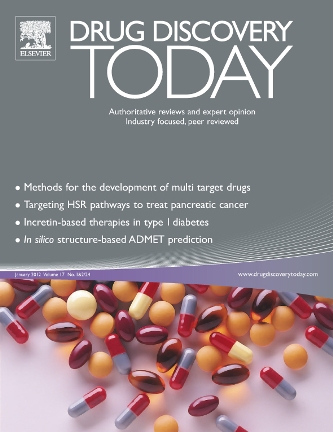Discovery of novel anti-fibrotics through phenotypic screening
IF 7.5
2区 医学
Q1 PHARMACOLOGY & PHARMACY
引用次数: 0
Abstract
Fibrosis is defined as the excessive accumulation of extracellular matrix (ECM) components following injury, affecting any organ in the human body. Fibrotic diseases of the vital organs (e.g. lung, heart, kidney, and liver) can be chronic, progressive, irreversible, and fatal. Although fibrotic diseases account for 45% of the mortality in the Western world, the available treatment options are limited in number, efficacy, and safety. There is a lack of progress in the development of novel anti-fibrotics, which has been attributed to a reliance on target-based screening. Phenotypic screening has been shown to be more successful in identifying first-in-class drugs compared with the target-based approach. Here we critically review the current landscape of phenotypic screening campaigns in fibrosis, evaluate their success in identifying translatable lead compounds, and highlight methodological pitfalls.
通过表型筛选发现新型抗纤维化药物。
纤维化被定义为损伤后细胞外基质(ECM)成分的过度积累,影响人体任何器官。重要器官(如肺、心、肾和肝)的纤维化疾病可能是慢性的、进行性的、不可逆的和致命的。尽管纤维化疾病占西方世界死亡率的45%,但可用的治疗选择在数量、疗效和安全性方面有限。新型抗纤维化药物的开发缺乏进展,这归因于对基于靶标的筛选的依赖。与基于靶标的方法相比,表型筛选已被证明在识别一流药物方面更成功。在这里,我们批判性地回顾了纤维化表型筛查活动的现状,评估了它们在识别可翻译先导化合物方面的成功,并强调了方法上的缺陷。
本文章由计算机程序翻译,如有差异,请以英文原文为准。
求助全文
约1分钟内获得全文
求助全文
来源期刊

Drug Discovery Today
医学-药学
CiteScore
14.80
自引率
2.70%
发文量
293
审稿时长
6 months
期刊介绍:
Drug Discovery Today delivers informed and highly current reviews for the discovery community. The magazine addresses not only the rapid scientific developments in drug discovery associated technologies but also the management, commercial and regulatory issues that increasingly play a part in how R&D is planned, structured and executed.
Features include comment by international experts, news and analysis of important developments, reviews of key scientific and strategic issues, overviews of recent progress in specific therapeutic areas and conference reports.
 求助内容:
求助内容: 应助结果提醒方式:
应助结果提醒方式:


